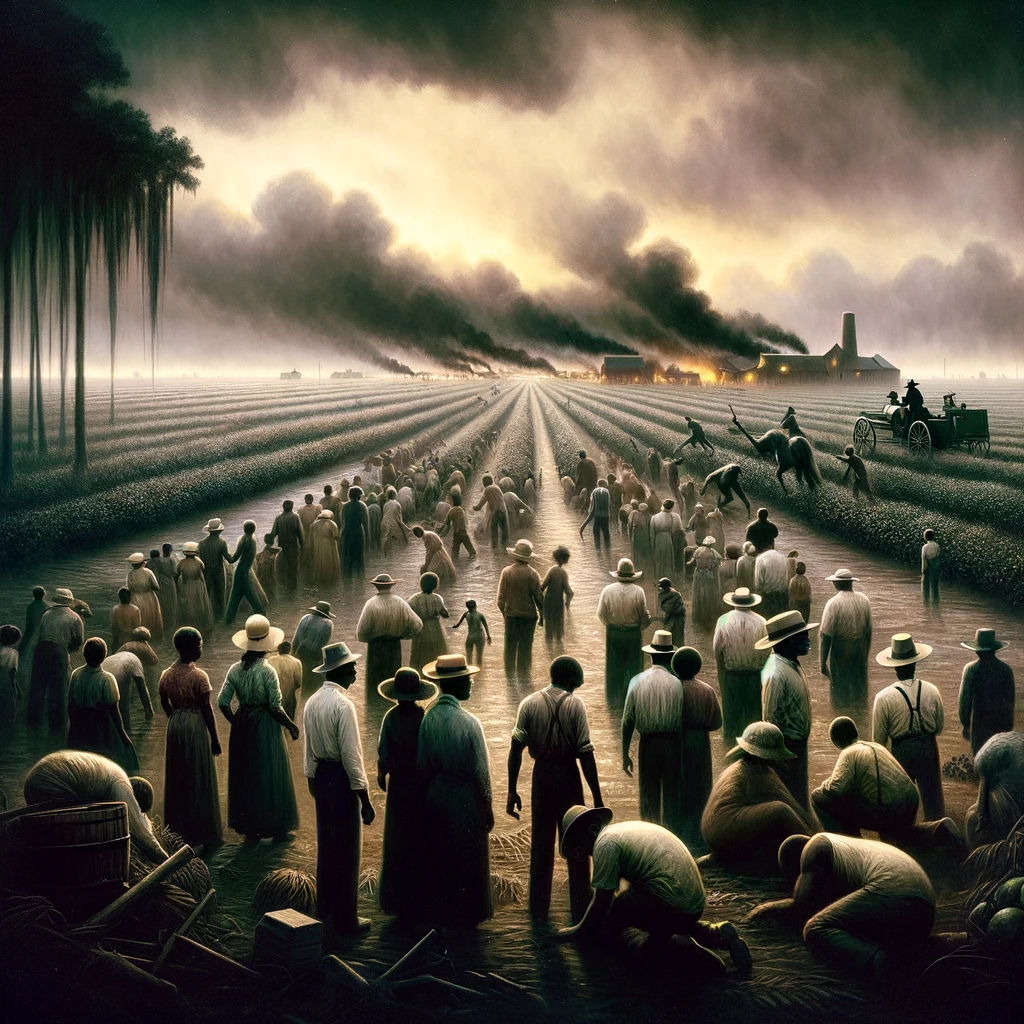The Elaine Massacre, which occurred in the small town of Elaine, Arkansas, in late September and early October 1919, stands as one of the deadliest racial confrontations in the United States during the 20th century, yet it remains largely overlooked in American history. This tragic event is part of what is now recognized as the “Red Summer” of 1919, a period marked by numerous race riots and labor disputes across the country. The Elaine Massacre, however, distinguished itself by the sheer scale of violence and the number of African American casualties.
Background
The early 20th century was a tumultuous period in American history, characterized by significant racial tensions, economic disparities, and the struggle for civil rights. African Americans, particularly in the South, faced systemic racism, disenfranchisement, and the constant threat of violence. In this volatile environment, the Progressive Farmers and Household Union of America began to organize Black sharecroppers in the Arkansas Delta, including Elaine, to demand fairer payments for their crops from white landowners and to buy land.
The Massacre
The tensions reached a boiling point on the night of September 30, 1919, when approximately 100 Black farmers attended a meeting at a church in Hoop Spur, near Elaine. They were there to discuss their plans for organizing for better compensation. Unsubstantiated fears among the white population of a Black insurrection led local law enforcement and white vigilantes to surround the church. Shots were fired—how the shooting started remains a subject of debate—and the confrontation escalated into a full-blown massacre.
Over the next several days, white mobs, supported by federal troops called in to quell the supposed insurrection, embarked on a spree of violence against the Black population of Elaine and surrounding areas. The exact number of African Americans killed during these events remains unknown, with estimates ranging from dozens to over 200. Many were murdered indiscriminately, including women and children, and numerous others were arrested and subjected to brutal interrogations.
Aftermath
In the aftermath of the massacre, the legal system further victimized the Black community of Elaine. Dozens of Black men were arrested and tried en masse in what were essentially kangaroo courts. Twelve men were initially convicted of murder and sentenced to death in trials that lacked due process and were marred by extreme racial prejudice. These convictions were eventually appealed, and in 1923, the Supreme Court case Moore v. Dempsey significantly changed the landscape of American jurisprudence by ruling that the defendants’ constitutional rights had been violated, leading to the eventual release of the Elaine Twelve.
Legacy
For decades, the Elaine Massacre was shrouded in silence or grossly misrepresented in historical accounts. Only in recent years has there been a concerted effort to uncover the truth and commemorate the victims of this tragedy. The massacre highlights the extreme racial violence African Americans endured and the lengths to which they would go to fight for their rights and dignity in the face of systemic oppression.

The Elaine Massacre serves as a somber reminder of the dark chapters of racial violence in American history, emphasizing the need for reconciliation and the importance of justice in healing these deep wounds. It underscores the ongoing struggle for racial equality and the resilience of communities that, despite facing unimaginable horrors, continue to fight for their rights and recognition.
